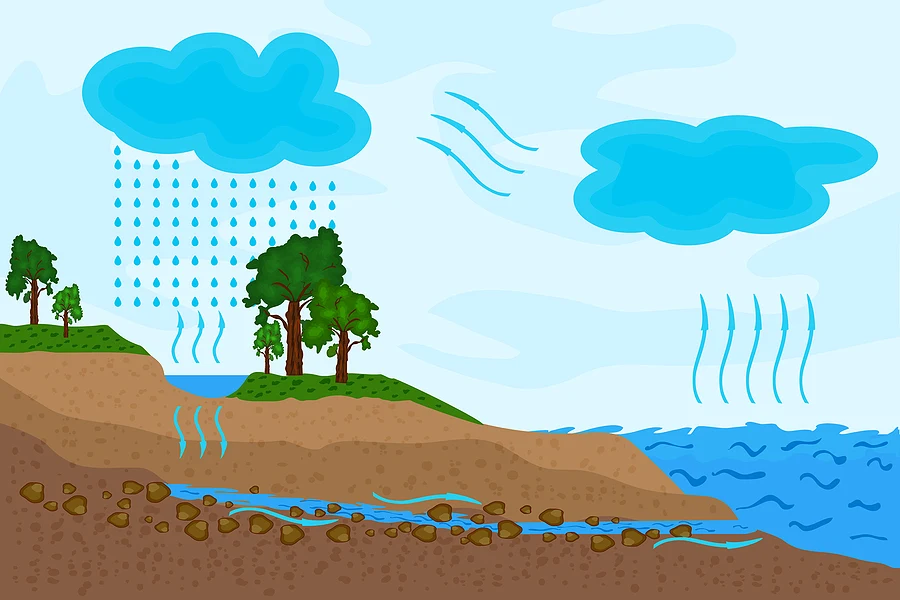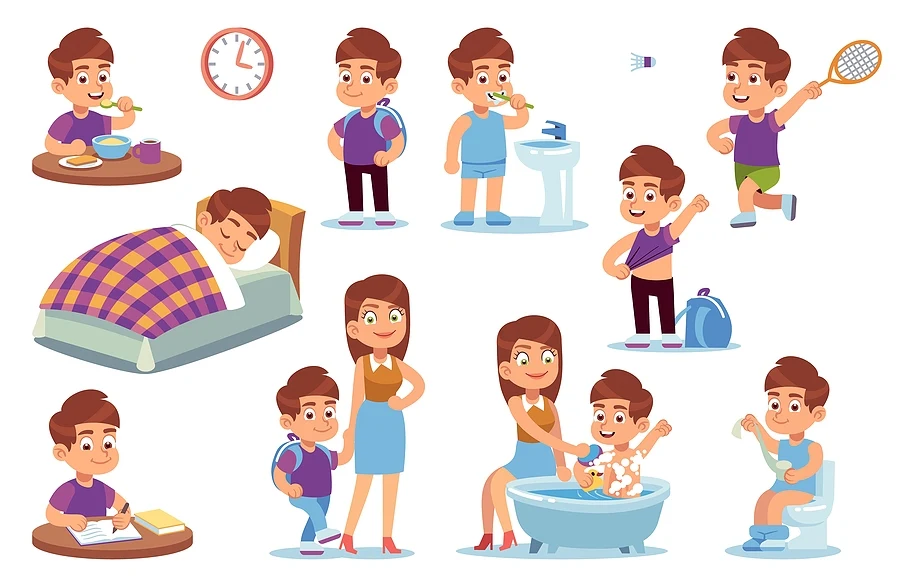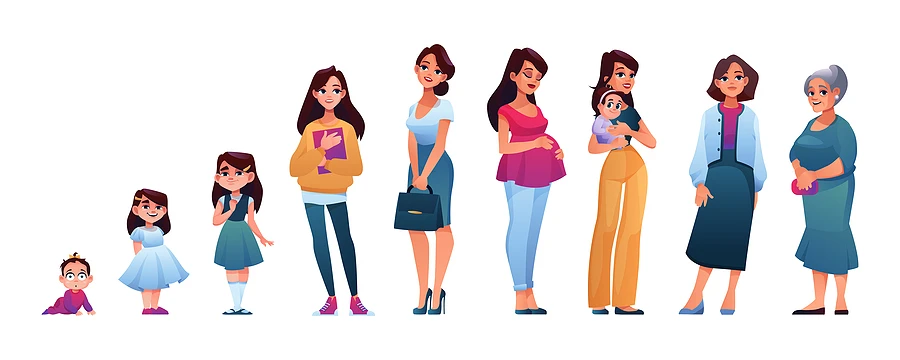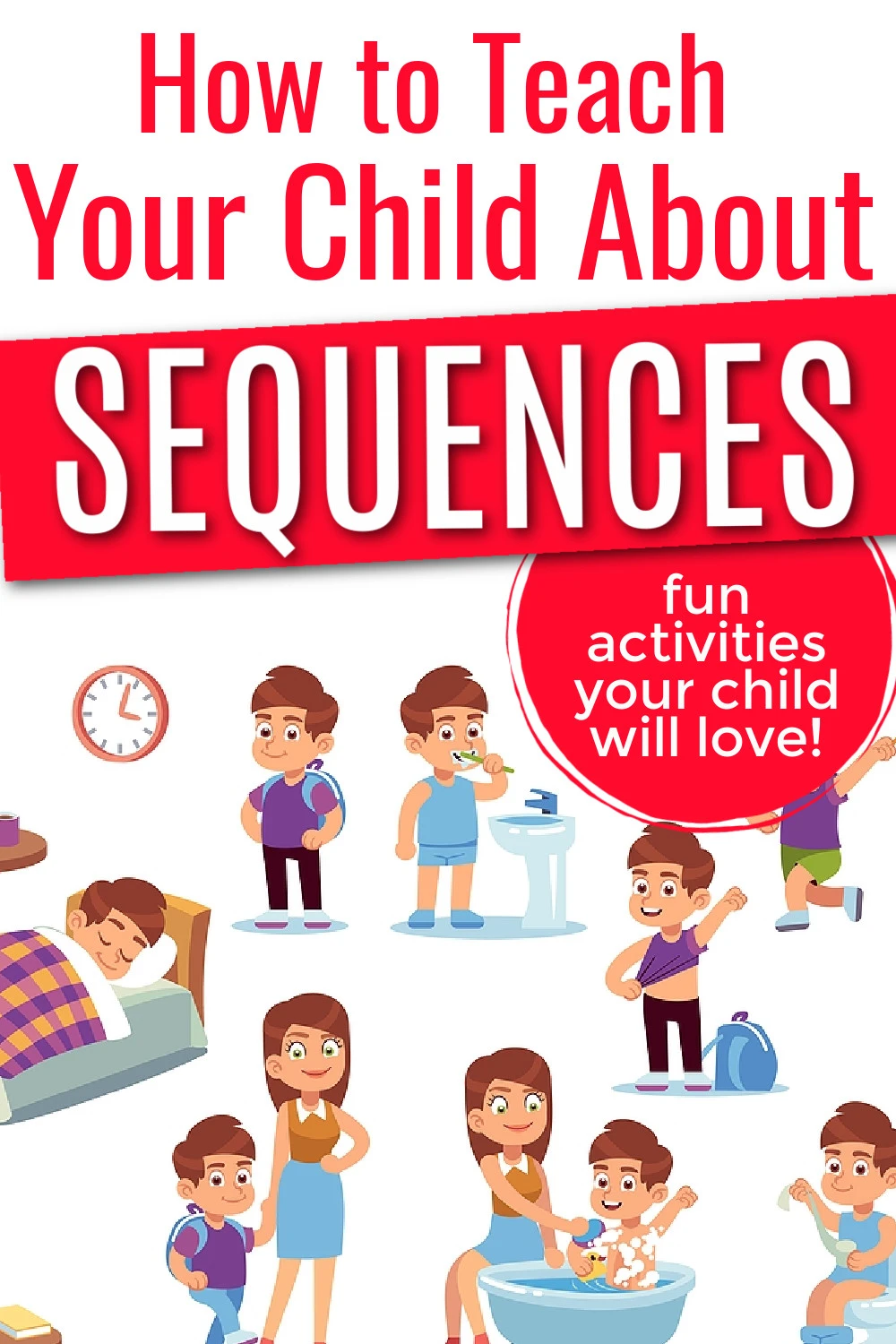During early childhood, children learn that life is filled with sequences, both at home and in their environment.
Whether you are teaching sequencing to preschoolers at home or in a class, here are some tips to get young kids to grasp this concept, as well as some sequencing activities to try.
What is Temporal Ordering?
Sequencing, also known as temporal ordering, is the process of arranging events in the order that they occur in time.
Sometimes the events just occur in a certain order, such as when dressing – undergarments go on first, trousers before shoes, etc.
Sometimes things change form, such as when rain evaporates, forms clouds and then continues the cycle.

Sometimes, there is also a change in size that comes with the passing of time, such as a puppy or a plant that grows bigger. Lifecycles are a good example of sequences in nature.
Why is Sequencing Important for Preschoolers?
Learning to sequence is an important part of a child’s cognitive development, along with learning mental concepts such as matching, sorting, pairing and cause-and-effect relationships.
Children learn how the world and its systems function according to patterns and stages, from getting ready for bed at night, to growing a tree. There is a certain predictability to how things happen and in what order they occur.
Patterns and stages are found in maths, science and many fields of study. Learning to sequence items and pictures from left to right even helps children learn to read from left to right.
Temporal sequencing develops children’s reasoning and common sense, as well as their overall knowledge.
How Do You Explain Sequencing to Preschoolers?
Similar to seriation, where items are placed in order according to size or another quality, the best way to explain sequencing to a child is to ask the basic question “What comes next?”
This simple question will prompt children to think of what the next logical step is, at an age when they don’t really have the vocabulary and maturity to understand what a sequence is.
Therefore, when explaining, use sentences like these, while teaching the vocabulary of ordering:
- What comes next?
- What’s the first thing you do when you wake up?
- Then, what do you do?
- Can you go to school before you’ve brushed your teeth?
- What happens after that?
- What will happen if we forget to mix the ingredients first?
- What’s the last step in this recipe?
Teaching sequencing to preschoolers does not always have to take the form of a specific sequencing activity, such as playing a sequencing game.
There are so many opportunities for learning in our daily lives or while at school, that this concept can be taught during play, during discussions and also during other activities that teach multiple skills (such as teaching children to sequence while playing shop – an early maths activity).
Sequencing Activities and Games for Preschoolers
Here are some simple sequencing activities to try with young kids.
1. Following a Recipe
Recipes are a great way to teach sequencing and ordering.
For young children, write out a basic recipe on a sheet of paper or whiteboard and tick off the steps as you follow them.
Here are some cooking activities for preschoolers that are quick and painless.
2. Daily Routine
Discuss the daily routine with small kids, whether at home or school.

As an art activity, create a daily routine poster to hang in the bedroom or classroom. Write out the main activities for the day and get your children to draw pictures for each activity and then decorate the poster to display.
Keep it simple for younger children but for older preschoolers, include times and more details.
Example of a home routine:
- Wake up
- Get Ready
- School
- Lunch
- Playtime
- TV time
- Dinner
- Bath
- Bedtime Story
- Sleep
Example of a classroom routine:
- Discussion
- Art Activity
- Snack time
- Playtime
- Music and Movement
- Indoor games
- Storytime
- Hometime
Place a marker or dot next to the current activity and move it throughout the day so your children get a sense of time moving.
3. Photo Story
Take a trip with children (to a park, to visit someone, to run errands, etc.) and take a few photos with your phone (4 or 5 should do) of events or things you see.
Print the pics onto a page (sized smaller to save ink) and cut out the individual pics.
Shuffle them and have your children place them in order of what you did today.
This activity should be relatively easy to do nowadays with mobile phones that take pics, otherwise, make your own cards and draw what you did during the day (make a card with a trolley to represent the shopping trip, a picture of granny to represent the visit, etc.)
4. Grow Beans
This is an activity many parents will remember doing at school.
Beans are fun and easy to grow and a great hands-on way to show kids the life cycle of a plant.
Draw the stages as they’re happening or make cards and ask kids to predict how the bean will grow.

5. Photo Sort
Need to sort out your photo albums?
Take out some photos of your children and get them to sequence the photos by age. Then, try this activity with other family members.
In a classroom? Ask each child to bring a set of 4 or 5 photos to school and pair them with a peer to arrange each other’s photos in sequence.

6. Story Time
Tell stories such as The Three Little Pigs and Goldilocks and the Three Bears.
These kinds of stories teach kids about sequences and must be told in a specific order. Get children to recount them in order.
This is also a good seriation activity as children will be ordering according to size (daddy bear, mamma bear and baby bear), as well as time.
7. Following Instructions
Using a whiteboard or any large surface, display a sequence of instructions for your child, using simple illustrations.
For example, draw the following simple pictures to represent these instructions:
- An apple – Finish your snack.
- A bookshelf – Tidy your books in your room and place them neatly on the shelf.
- A tree – Then you can play outside in the garden.
- A pair of hands – Wash your hands when you come back inside.
- A television – Then you can watch a few minutes of television while I prepare dinner.
Explain the instructions thoroughly so your child learns to associate the symbols with the instructions.
Giving your child 2-step directions orally, and later multi-step directions, will help build their concept of the order of events.
You can also use these listen-and-draw activities to learn instructions in sequence.
8. Sequencing Cards
Traditional story sequencing activities for preschoolers are usually sets of cards with pictures on them that children place in the correct order.
While you can make many of your own as in the examples above, children will enjoy having a good set of picture story cards.
(Get your own set of printable sequencing cards here!)
Are you a preschool teacher or working in Early Childhood Education? Would you like to receive regular emails with useful tips and play-based activity ideas to try with your children? Sign up for the newsletter!
Source:
“Total Learning: Developmental Curriculum for the Young Child”, written by Joanne Hendrick.

